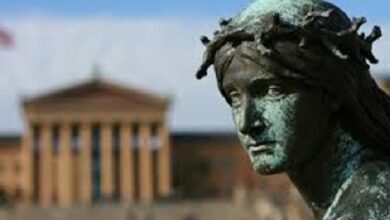What are nomads in history with Characteristics famous sedentary
Nomads
For some, it has been more comfortable to live from one place to another without having to worry about maintaining a place of residence, which has allowed them to see the world without great responsibilities to attend to. On the other hand, others are terrified by the idea of not having a place to live, which makes them worry about finding and maintaining a decent and comfortable place to form a home. In this article we will make you aware about What are nomads in history?
In the past things were different, especially in prehistory where man was changing and evolving more and more. In this article we will talk about nomadic peoples, who they were, their characteristics and what challenges they faced .
What are nomads?
It is well known that during evolution the fittest have survived and this is what they call natural selection, all species look for the way to be in the best conditions for their survival. One of the tricks that they have had from prehistory to the present day is migration, absolutely all species have done it and this in order to seek the best quality of life and this is precisely what the nomads did many years ago.
Enhance your reading: What is the difference between Anarchism and Marxism/comparison table
Nomads are called people who do not stay in one place for a long time and are constantly changing places . There are a large number of people in the world who live this way, about 40 million, either in tribes, towns or individually. However, in ancient times nomadic peoples were vastly more common.
Characteristics of nomadic peoples
- Their source of food came from fishing, hunting and gathering fruits, therefore, they had a high dependence on the place where they were .
- Their shelters had to be light , because they were constantly on the move and were built with the skins of animals and branches. When the low temperatures came they looked for caves to be able to protect themselves.
- They dressed in the skins of the animals they killed.
- Men were engaged in hunting and women in gathering .
- There was a hierarchy where the elderly were more respected for their wisdom and women for their high reproductive capacity.
- They managed to build their tools with stones, wood and bones.
- Clans were created by family union between different groups, clans of approximately 30 individuals.
- Their primary form of organization was through clans and tribes, where they formed alliances to be able to solve the different common problems that could arise. It was often seen in these societies that the father, usually the oldest, was the one who carried out the decisions in a patriarchal way. The father is the one who made the decisions of how long to stay in a place and which place would be the best option to stay. It was he who had the knowledge from the experience of the years lived.
The best known nomads in history
For a long time humanity lived as a nomad, all the peoples that existed constantly traveled to be able to get food and all the necessary sustenance to survive. Among the best known nomads, the Mongol, Bedouin, Kochi and Yoruk people located around the Asian continent can be highlighted . In Europe we have the Eskimos in Greenland, a large number of Gypsy peoples and the Sarakatsani . In Africa the Pygmies and the Joisán . The Amazonian populations of South America and Chichimecas in Central America.
On the other hand, living as a nomad was not an easy task, because not having a stable source of food, they did not know how much food could be found in the place to which they migrated. They had to walk many kilometers to find a place where there is good sustenance. In addition, the climatic changes were a big problem for them, since being in constant movement they were never really prepared for these changes. Also, being in constant movement could even affect the health of individuals, since they could surprisingly suffer from heat stroke or hypothermia.
Enhance your reading: What is the difference between Colonialism and Imperialism/comparison table
Nomads and sedentary
Nomadic peoples and sedentary peoples have quite marked differences, among which the following can be mentioned:
- Nomads do not have a defined territory, since they move from one place to another; while the sedentary remain in the same geographic space.
- Nomads weren’t very good at farming, while sedentary ones were.
- The nomads were organized in both religion and politics and administration while the sedentary had an absolute leader.
- The nomads’ diet depended on the collection of fruits, seeds, some vegetables and the animals they hunted, while the sedentary relied on agriculture and livestock.
- The nomads dressed with the skins of the animals they hunted and the sedentary used clothes made of cotton, linen, wool, among other more elaborate fabrics.
- The nomads did not know the writing, while the sedentary left some written evidence.
- Nomadic dwelling materials were quite vulnerable while sedentary dwellings were more stable made of block and concrete.
If these characteristics are analyzed with a bit of detail, it could be affirmed that the nomadic peoples were a little more backward than the sedentary peoples and this was because they were not stable in any sense, so the modernization of their customs, tools, homes, clothing, among other things.
